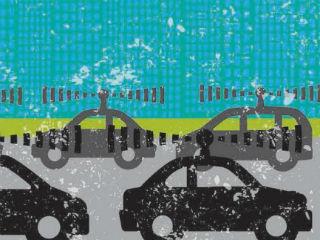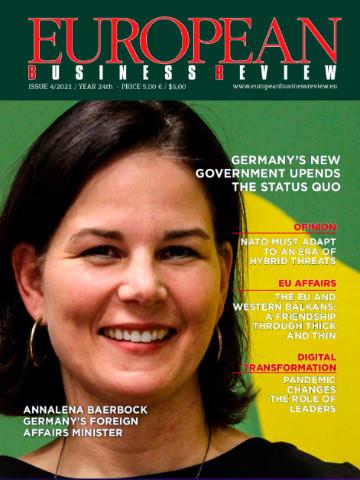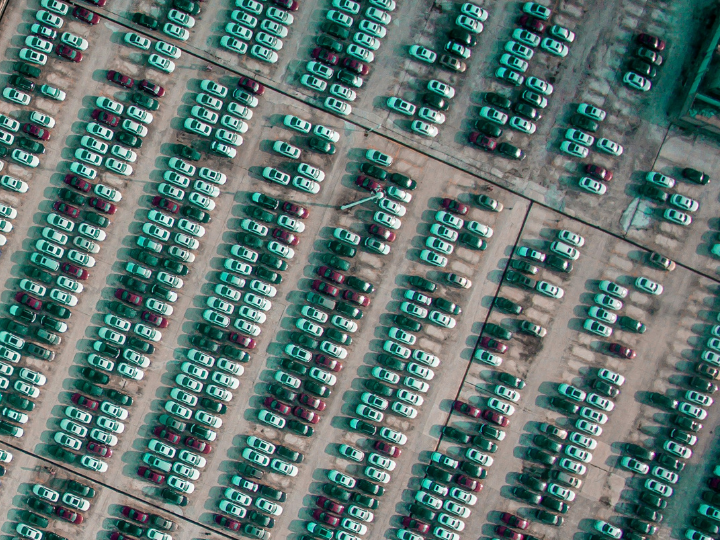The telecoms industry has the ambition to connect everything and everyone. In Europe, telecom operators and vendors work together with the automotive sector to get connected cars on the roads

Pay with your phone As The Economist wrote recently, the automobile industry faces the huge wrench of adapting to a future of electrification and self-driving cars. Software and electronics are displacing mechanical parts as the most important components of a car. You could also say that cars will be data centres on four wheels. This means business, though nobody yet fully grasps what kind of business this will look like. For mobile network operators, there is opportunity not only in connecting more vehicles on the road but in offering a broader platform of services to car owners and passengers.
by
Joop Hazenberg*
This cooperation fits in the dramatic digitalisation of Europe’s society and economy in the next decade. It will also alter the telecoms industry itself.
In the not-so-distant future, we will be able to get in a car in Lisbon and drive to Copenhagen, without stopping ever, without touching the steering wheel. Gliding past mountains and rivers, through landscapes of corn fields and over sky-high bridges. Before the self-driving car hits the road though, we have to overcome many hurdles – technical, regulatory, political.
The world’s telecom players have a crucial role to play in this extremely complex ball game. The most wondrous acronyms fly around in the policy circles of the stakeholders making connected cars a reality, such as IEEE802.11p/ETSI-G5, LTE-V2X, CSMA/CA and LIPA/SIPTO. Though these acronyms alone are already mind-boggling, the technical processes behind making cars ‘smart’ are the exclusive playground for engineers.
Why is the telecoms industry getting involved in the car industry? Because we have the ambition to connect everything and everyone. Within the next ten years, the Internet of Things will have up to 1 million devices connected per square kilometers. Billions of these devices will have cellular connections, and millions of them will actually be on four, or even more wheels. Already up to one in four new cars being sold is connected, for instance, for use cases such as telematics, infotainment and WiFi hotspots in the car. But this revolution will go much further.
Pay with your phone As The Economist wrote recently, the automobile industry faces the huge wrench of adapting to a future of electrification and self-driving cars. Software and electronics are displacing mechanical parts as the most important components of a car. You could also say that cars will be data centres on four wheels. This means business, though nobody yet fully grasps what kind of business this will look like. For mobile network operators, there is opportunity not only in connecting more vehicles on the road but in offering a broader platform of services to car owners and passengers.
The telecoms industry is extending its relevance to other sectors. Think digital health, with doctors providing consultations, prescriptions and in the near future even operations through high-speed, ultra-reliable and realtime connections. Think digital banking: in Belgium you can now pay with your mobile phone. Think smart energy: the transition towards a decentralised power grid with countless windmills and solar power panels requires an extremely smart grid that can distribute electricity in smart networks.
The sexiest, most tangible example of digitisation of our economy is of course the connected car. The GSMA’s Mobile World Congress was full of them, with dozens of stands at the venue in Barcelona from leading car manufacturers such as BMW and Ford who were aisle-to-aisle with stands showcasing radio antennas and the latest Nokia not-so-smartphone. With good reason: the connected car market will be worth $250 billion by 2025.
Talking road signs
Automation and connectivity go hand in hand as they facilitate the trend from “dumb” to self-driving cars, which has been divided into six phases, or levels, of automation. A self-parking
car is one thing, but if you talk about truck platooning, highway chauffeuring or driving in dense urban traffic with pedestrians and cyclists, then the challenge becomes enormous. The car cannot rely solely on its sensors and cameras, by which it builds a picture of what’s happening around him. It also needs to anticipate, to know what’s happening in the next several hundred meters ahead of the car. Is there an ambulance coming from the right, beyond the sight of the cameras? What does the infrastructure say? Yes, road signs will also be talking to the connected car, for instance, informing the vehicle on an upcoming road hazard.
Such information needs to be exchanged in gigantic volumes, at an incredible speed, and it needs to be processed in real time. Especially when it comes to safety-related use cases, connectivity of cars is a must. Smart cars can only be so smart by themselves, but if they collaborate with each other, they can actually become real whiz-kids and decimate the number of road fatalities. The collective wisdom of connected cars is the real prize that we’re looking for. Compare it maybe to a nest of ants. They take decisions locally, but together; they work in harmony.
For this ‘cooperative driving’ to becoming a reality, a lot of stakeholders in the emerging ecosystem of the connected car need to make a lot of sound decisions. We don’t only need the carmakers, suppliers and the telecom companies around the table, but also the EU institutions, member states, road authorities, insurance companies and many others.
This is a very complex puzzle. And as with any puzzle, there are struggles. For instance, the automotives are divided on the issue of which technology for short-range communication should prevail. Also the policy cooperation between EU Member States needs improvement. Consider for instance the handover of roaming signals when you cross a border. The storage of data, with many member states opting for data localisation instead of a free flow of data. Or the road signs: the arrows on the road differ from country to country.
Within the European Automotive-Telecoms Alliance, we are openly addressing all these regulatory issues. The European Commission is very active with initiatives like the ITS platform, GEAR 2030 and an upcoming masterplan for connected and automated driving. And the EU Member States are now also on board in their own high-level meetings on smart cars.
Compared to other regions and continents, Europe really is ahead of everyone else on the complex road to connected cars. It may take years before you can drive from Lisbon to Copenhagen without touching the steering wheel, but the groundwork for such relaxed and effortless driving is being laid as we speak.
*Joop Hazenberg is Senior Manager European Advocacy at the GSMA. GSMA represents the interests of mobile operators worldwide, uniting nearly 800 operators with more than 300 companies in the broader mobile ecosystem, including handset and device makers, software companies, equipment providers and internet companies, as well as organisations in adjacent industry sectors.




 By: N. Peter Kramer
By: N. Peter Kramer

